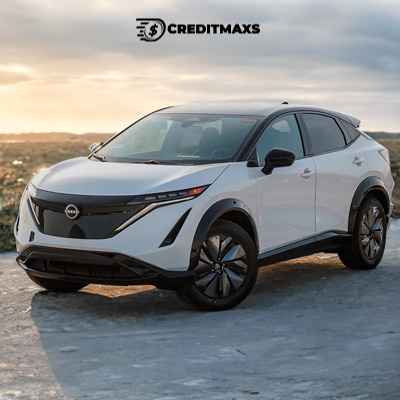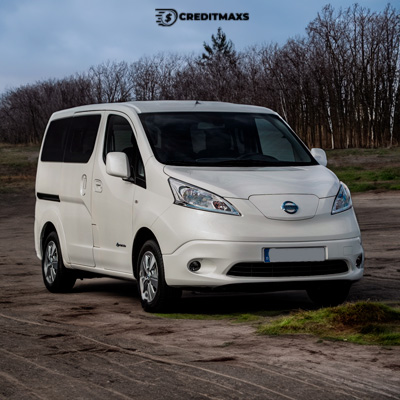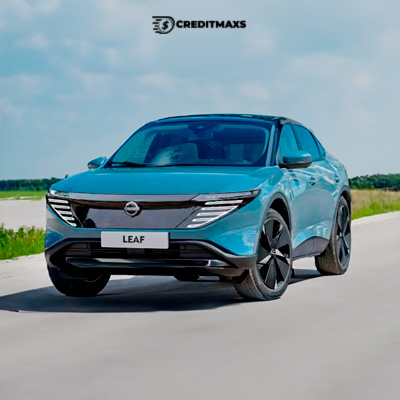Nissan Electric Cars: Comprehensive Technical Overview of Four Models
Nissan electric cars in 2025 present a dynamic lineup that meets the needs of diverse drivers—from efficient city commuters to commanding crossovers and practical commercial vans.
Let’s dive into the technical strengths and distinctive features that define each model in Nissan’s 2025 electric portfolio.
Nissan LEAF: Urban Efficiency and Everyday Performance ✨

Powertrain and Torque 🚗
The Nissan LEAF offers two battery configurations: a 40 kWh setup paired with a 147 hp electric motor producing 236 lb-ft of torque, and a 60 kWh option linked to a 214 hp motor delivering 250 lb-ft. Both systems use a single-speed direct-drive transmission that provides seamless power delivery and swift throttle response.
Nissan electric cars – Range and Charging Capabilities ⚡️
The 40 kWh variant achieves about 149 EPA miles, while the 60 kWh version reaches an estimated 212 miles per charge. It includes a 6.6 kW onboard AC charger and supports CHAdeMO fast charging, with top trims offering up to 100 kW fast-charging capacity, allowing rapid battery top-ups during daily use.
Handling and Ride Quality 🌄
Built on a lightweight and compact chassis, the LEAF incorporates an independent front suspension and a torsion-beam rear for smooth handling through urban streets. Its floor-mounted battery lowers the center of gravity, enhancing stability and reducing body roll.
Nissan electric cars – Interior Comfort and Tech 🎧
Inside, the LEAF combines user-friendly features like the e-Pedal mode, which lets drivers accelerate and brake with a single pedal, with practical amenities such as dual USB ports and available heated seats. The infotainment system is intuitive, providing reliable smartphone integration without complicating the interface.
Nissan electric cars – Practical Cargo and Payload 🛋️
Despite its moderate size, the LEAF supports up to 972 lbs of payload and offers versatile cargo space thanks to its hatchback design. The cabin layout is functional yet modern, making it well-suited for daily errands and city driving.
Nissan Ariya: Electric Crossover Performance and Innovation 🚤

Dual-Motor e‑4ORCE All-Wheel Drive ❄️
The Ariya’s dual-motor e-4ORCE AWD system is available with two battery options. The 63 kWh model delivers 335 hp and 413 lb-ft of torque, while the 87 kWh variant increases output to 389 hp with 442 lb-ft of torque. This setup provides sharp acceleration, responsive handling, and excellent traction in varied road conditions.
Nissan electric cars – Thermal Management and Charging Speed ⌛️
Equipped with a liquid-cooled thermal management system, the Ariya ensures consistent battery performance and efficient charging. The 63 kWh model offers approximately 216 EPA miles, while the 87 kWh version extends the range to up to 289 miles. It supports 130 kW DC fast charging, enabling 20–80% battery restoration in 35–40 minutes, complemented by a 7.4 kW onboard AC charger.
Chassis Design and Suspension 🌈
Built on Nissan’s CMF‑EV (AmpR) platform, the Ariya features an independent multi-link rear suspension and front struts that deliver a balance between comfort and confident handling. With a 109.3-inch wheelbase and 6.3-inch ground clearance, it offers SUV versatility and sedan-like stability.
Nissan electric cars – Cabin Craftsmanship and Connectivity 📱
The Ariya boasts a refined interior with soft-touch materials, ambient lighting, and dual-zone climate control. It includes a sizeable 12.3-inch touchscreen, wireless Apple CarPlay/Android Auto, and enhanced audio options. Its layout and usability appeal to buyers seeking a premium experience.
Cargo Space and Capacity 🛂
The 2025 Ariya provides up to 59.7 cu ft of cargo space with the rear seats folded and a maximum payload of 990 lbs, making it practical for families and active lifestyles.
Nissan e‑NV200: Purpose-Built Electric Van 🚚

Electric Motor and Daily Use ⏳
The e‑NV200 features an efficient electric drivetrain suited to city logistics. While specific power figures are modest, its low-speed torque is ideal for urban deliveries. The electric vehicle delivers a smooth and quiet ride ideal for vocational use.
Cargo Layout and Functionality 🚜
Its boxy design and low floor height create an expansive and functional cargo area. Streamlined rear doors and easy access support efficient loading and unloading, catering to delivery services and corporate fleet operations.
Cost-Efficiency and Sustainability 🌍
Designed for zero-emission performance, the e‑NV200 reduces fuel and maintenance costs while contributing to clean-city initiatives. It offers dependable performance for short routes and dense urban environments.
Next‑Gen LEAF Crossover: Ahead of Its Time 🚀

Platform and Electric Powertrain 🔋
Slated for debut in late 2025, this future crossover builds on the Ariya’s CMF‑EV framework and is expected to offer both front-wheel-drive and dual-motor all-wheel-drive configurations. Projections suggest the crossover will exceed 300 miles of estimated range, supported by enhanced battery chemistry and larger capacity.
Charging System and Connector Compatibility 🚫
The next-gen LEAF crossover is anticipated to support CCS fast charging and Tesla’s NACS connector, expanding access to public charging networks. Likely DC fast-charging times are expected to reach 0–80% battery in roughly 30 minutes.
Advanced Driver Technologies 🚖
Borrowing features from the Ariya, the crossover is expected to include tools like ProPILOT Assist, 360-degree camera systems, and an augmented-reality heads-up display. Over-the-air software updates will ensure the vehicle remains up to date.
Technical Comparison at a Glance 📊
| Model | Powertrain | Battery Capacity | Range (EPA) | Horsepower | Torque | Charging Time (Fast) | Price (USD) |
|---|---|---|---|---|---|---|---|
| Nissan Leaf | Single electric motor, FWD | 40 kWh / 62 kWh | 149–212 miles | 147–214 hp | 236 lb-ft | About 40 minutes (50 kW) | $29,000 – $37,000 |
| Nissan Ariya | Single or dual motor (AWD e-4ORCE) | 63 kWh / 87 kWh | 216–304 miles | 214–389 hp | 221–442 lb-ft | 35 minutes (130 kW to 80%) | $43,000 – $60,000 |
| Nissan Sakura | Single motor, FWD | 20 kWh | 112 miles (estimated) | 63 hp | 144 lb-ft | 40 minutes (Quick Charge) | $15,000 – $20,000 (estimated) |
| Nissan e-NV200 | Single motor, FWD | 40 kWh | 124 miles (WLTP) | 109 hp | 187 lb-ft | 40–60 minutes (CHAdeMO) | $33,000 – $38,000 |
Innovation and Versatility in Motion ✨
In 2025, Nissan electric cars encapsulate an impressive range of engineering capabilities:
- The LEAF delivers practical, efficient urban driving with polished tech and handling.
- The Ariya combines powerful performance, luxury amenities, and long-distance use.
- The e‑NV200 offers urban logistical practicality without emissions or maintenance headaches.
- The next-gen LEAF crossover promises to elevate Nissan’s EV offering with expanded range, advanced connectivity, and wider charging support.
Across models, Nissan demonstrates engineering leadership through innovation in range, torque management, fast-charging capabilities, and user-centered design.
FAQ – Nissan EV Technical Insights ❓
1. Which Nissan model is best for city use?
- The LEAF remains the top choice with its compact form, efficient battery packs, and user-friendly e-Pedal feature.
2. Can Ariya match EV performance expectations?
- Yes, especially with the dual-motor e-4ORCE system, the Ariya achieves 0–60 mph in about 4.8 seconds and supports fast-charging up to 130 kW.
3. Is the e-NV200 suitable for fleets?
- Absolutely—its spacious cargo area, low maintenance needs, and electric drivetrain make it a robust option for delivery and service fleets.